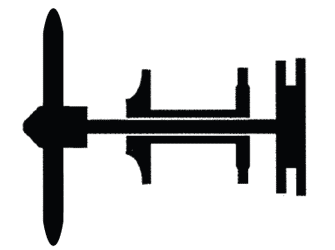In 1958 a market study by Pratt & Whitney Canada (P&WC) determined there was a need for a turbo-prop/turbo-shaft engine in the 500 to 1000 horse power range. At the time P&WC was a branch company of P&W engine company in USA. P&W was a major manufacturer of large piston and turbine engines for both military and civilian aircraft. P&WC manufactured and sold piston engine parts world wide for a wide range of P&W engines, from the 985 cubic inch to the 4360 cubic inch models. This was to be there fist effort at developing and producing a turbine engine. Support by the parent company was to be critical in there success. The R&D took 6 years, cost the company's net wort at the time, required huge dedication from many individuals, often working 80 + hours a week and operating 3 shifts for 24 hour development coverage. By 1964 the engine was installed and being tested as a turbo-prop in 3 different models of fixed wing aircraft and as a turbo-shaft in 6 different models of helicopters. There was strong military and civilian support for the new small gas turbine engine.
One of the early major design decisions was to go with a "free power turbine" rather then a fixed shaft arrangement. Although more costlier to develop then a fixed shaft arrangement the free power turbine is easier to start, more flexible in operation and more adaptable to a wide range of aircraft and helicopter types. On a fixed shaft engine all compressor and turbine stages share a common shaft and rotate together. The turbines drive the compressor and produce the power. On a free power turbine there are two independent rotating groups, a compressor turbine group and a turbine producing power. There is no mechanical connection and the link between the two is made by the flow of hot combustion gas.
Another important decision was to use an opposed-shaft design rather then a coaxial shaft design. This would put the air inlet/compressor at the rear of the engine and the power turbine/reduction gear box at the front of the engine. This would be cheaper and easier to develop, an important consideration at the time. It would also make engine maintenance easier and faster as the most commonly inspected/replaced parts could be accessed without removing the engine from the aircraft.

Coaxial shaft free power turbine style

Opposed Coaxial shaft free power turbine style

Fixed Shaft style